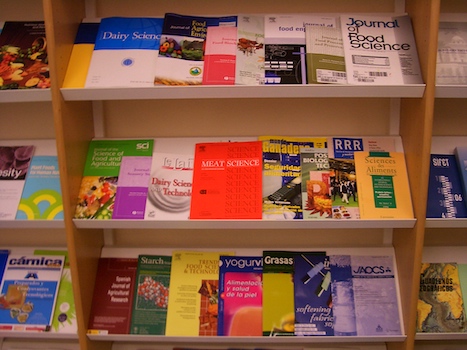What we get for our innovation spending: don’t ask, don’t tell
 David Crane is an award-winning journalist who has spent much of his career writing about Canadian innovation policy and its implications for Canadians. He can be reached at crane@interlog.com.
David Crane is an award-winning journalist who has spent much of his career writing about Canadian innovation policy and its implications for Canadians. He can be reached at crane@interlog.com.
Canadians — including, governments, corporations, universities, and colleges and other research performers — spent US$28.6 billion on R&D in 2022, according to the OECD. Relative to the size of our economy and what other countries are doing, we are not big innovation investors. Nonetheless, what is our return on this investment? What benefits are we getting? And if we want to be more innovative as a nation, are we spending this money in the best way? And if we needed to spend more, where and how to do so?
No one really knows.
Spending on innovation gets almost no attention from Parliament, for example. There is little interest shown by our MPs in determining whether federal spending and tax incentives are delivering value, or whether individual programs are working. This is even the case with MPs on the House of Commons Standing Committee on Industry and Technology, who should care. In fact, it hardly seems to be on their radar screen.
Earlier this year, on March 1, MPs on that committee received a referral to examine the 2023-24 spending Estimates for the Department of Industry, Science and Economic Development and its associated agencies. These included the National Research Council, the Canadian Space Agency, the Natural Sciences and Engineering Research Council, the Social Sciences and Humanities Research Council, and regional economic development agencies for Atlantic Canada, Quebec, Ontario, and Western Canada. Total requested spending for the 2023-24 fiscal year amounted to $13.1 billion.
This is a lot of money. Yet the MPs decided to hold no hearings before their May 31 deadline; under Parliamentary rules the spending was deemed to have been automatically approved by the committee with no questions asked. The committee can no longer study the 2023-24 Estimates. The Committee met six times in March, four times in April and eight times in May, so there was time to examine the estimates, if the MPs had wanted to do so.
But even on previous occasions when the Industry Committee actually did review the estimates, in 2019 and 2020, the hearings were perfunctory, punctuated with only brief appearances by then-Industry Minister Navdeep Bains. He did not seem to consider the Committee’s reviewing of his department’s estimates particularly important, and the MPs seemed grateful that he had even bothered to show up at all.
Check it out: Who are the 12 members of the Standing Committee on Industry and Technology?
In fact, over the past five years, there has been no serious examination of more than $50 billion spent by Industry Canada through the Industry Committee. And yet, you might think serious scrutiny of spending should be a key role for any MP. Perhaps not to the extent of carrying out detailed studies on Industry Canada programs, but one would expect the MPs’ voices to be among those demanding the creation of an arm’s length institution — an Economic Council or Science Council — with the people and capabilities to evaluate what kind of return we are getting on federal investments in innovation, whether individual programs are delivering what was promised, whether they constitute the best use of federal funds, and whether different kinds of programs or incentives might work better.
Such an institution would be independent of government, making public all of its findings. This would not only help MPs ask better questions and make recommendations to improve innovation initiatives, since ultimately these decisions are political decisions (in the best sense of the word). It would also help the wider public have a much better understanding of innovation policy, which, one would hope, would expand and raise the level of public debate on this subject.
Nevertheless, a key reason we lack such an institution is that MPs are not demanding it.
How Americans are dealing with this challenge
Nor is Canada the only country where there is an information gap. The same problem can be found in the United States, but there a new effort is being made to narrow this gap, to see what has worked as well as shape future policy. This new program, Assessing and Predicting Technology Outcomes, comes from the US National Science Foundation (NSF), with a US$30 million budget.
“The outcome of this work,” the NSF says, “will help assess and evaluate the effectiveness of US R&D investments and generate information that decision-makers could use to strategize and optimize investments for advancing long-term US competitiveness into the future.”
The organization is inviting American universities, think tanks, and other groups to submit proposals to undertake the needed research. In Canada we have had some useful studies from the Council of Canadian Academies and the Centre for the Study of Living Standards, but what is needed would take this kind of much larger commitment.
The NSF focus will be on technology capabilities, technology production, and technology use. By learning what has — and has not — worked in the past, the NSF wants to better understand “which science and technology investments would offer the greatest impact in the key technology focus areas and would be useful to the long-term national security and economic prosperity of the United States”.
Moving forward, the key technologies of interest to the NSF are artificial intelligence, high performance computing, semiconductors, quantum technology, robotics and advanced manufacturing, technology for climate change, advanced communications technology, biotechnology, genomics and synthetic biology, data storage and management, advanced energy efficiency technologies including batteries, and advanced materials science.
Canada has ambitions in many of these same areas but, aside from establishing advisory committees, it is not clear how decision-makers will determine the most effective course for advancing Canadians capabilities and competitiveness. This is the kind of question Industry Committee MPs might have addressed, had they reviewed Industry Canada’s 2023-24 spending Estimates.
Innovation is the key to our future. But we need much better analysis and debate on what can deliver the best results. Today, we have scant knowledge and it seems unlikely we will do better until we have both better knowledge and better use of that knowledge. We need a wake-up call but who or what is going to wake us up?
R$
| Organizations: | |
| People: | |
| Topics: |
Events For Leaders in
Science, Tech, Innovation, and Policy
Discuss and learn from those in the know at our virtual and in-person events.
See Upcoming Events
You have 0 free articles remaining.
Don't miss out - start your free trial today.
Start your FREE trial Already a member? Log in
By using this website, you agree to our use of cookies. We use cookies to provide you with a great experience and to help our website run effectively in accordance with our Privacy Policy and Terms of Service.





